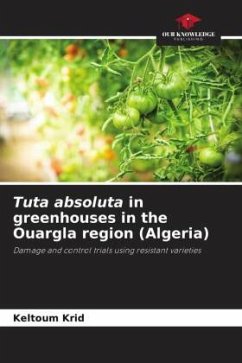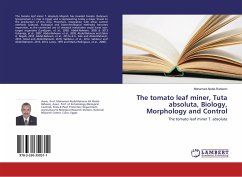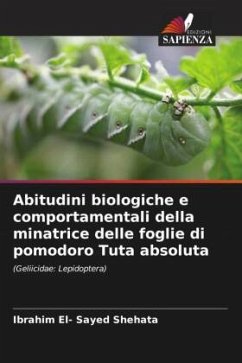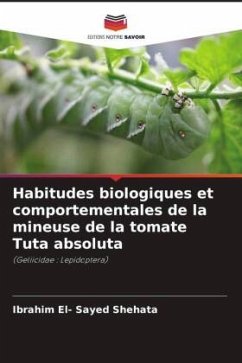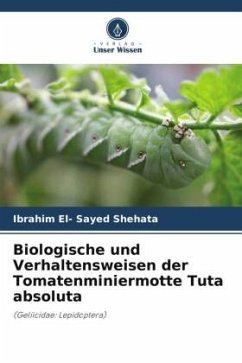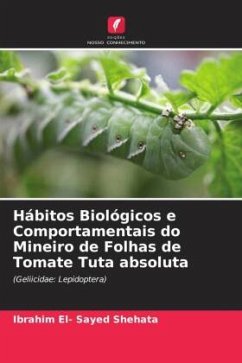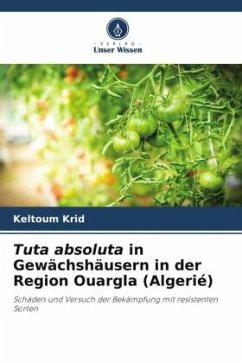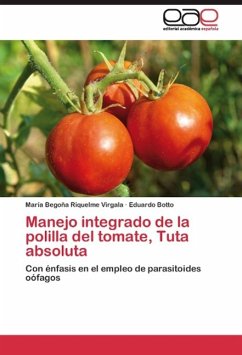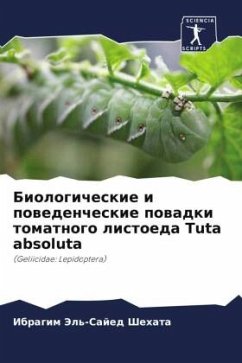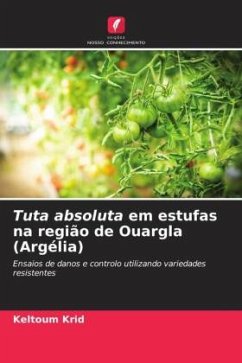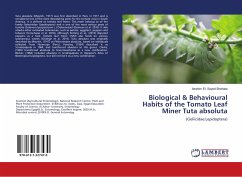
Biological & Behavioural Habits of the Tomato Leaf Miner Tuta absoluta
(Geliicidae:Lepidoptera)
Versandkostenfrei!
Versandfertig in 6-10 Tagen
27,99 €
inkl. MwSt.

PAYBACK Punkte
14 °P sammeln!
Tuta absoluta (Meyrick, 1917) was first described in Peru in 1917 and is considered one of the most devastating pests for the tomato crop in South America. It is defined as tomato leaf miner. This moth belongs to of the family Gelechiidae (Lepidoptera) and is one of the most serious pests of tomato (Solanum lycopersicum L.) (Solanaceae) (Desneux et al. 2010). It also attacks other cultivated Solanaceae, such as potato, eggplant, peppers and tobacco (Tumuhaise et al. 2016), although Potting et al., (2013) disputed peppers as a host. Tomato leaf miner (TLM) also feeds on various solanaceous weed...
Tuta absoluta (Meyrick, 1917) was first described in Peru in 1917 and is considered one of the most devastating pests for the tomato crop in South America. It is defined as tomato leaf miner. This moth belongs to of the family Gelechiidae (Lepidoptera) and is one of the most serious pests of tomato (Solanum lycopersicum L.) (Solanaceae) (Desneux et al. 2010). It also attacks other cultivated Solanaceae, such as potato, eggplant, peppers and tobacco (Tumuhaise et al. 2016), although Potting et al., (2013) disputed peppers as a host. Tomato leaf miner (TLM) also feeds on various solanaceous weeds (Chidege et al. 2016). Tuta absoluta was originally described by Meyrick, (1917) as Phthorimaea absoluta, based on individuals collected from Huancayo (Peru). Povolny, (1964) described it as Scrobipalpula in 1964, and transferred absoluta to this genus. Clarke, (1965) transferred absoluta to Gnorimoschema as a new combination. Becker, (1984) included absoluta in Scrobipalpula in Heppner's Atlas of Neotropical Lepidoptera, but did not list it as a new combination.



